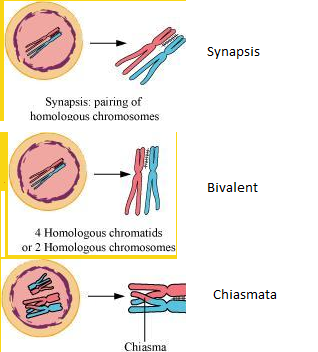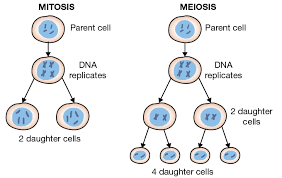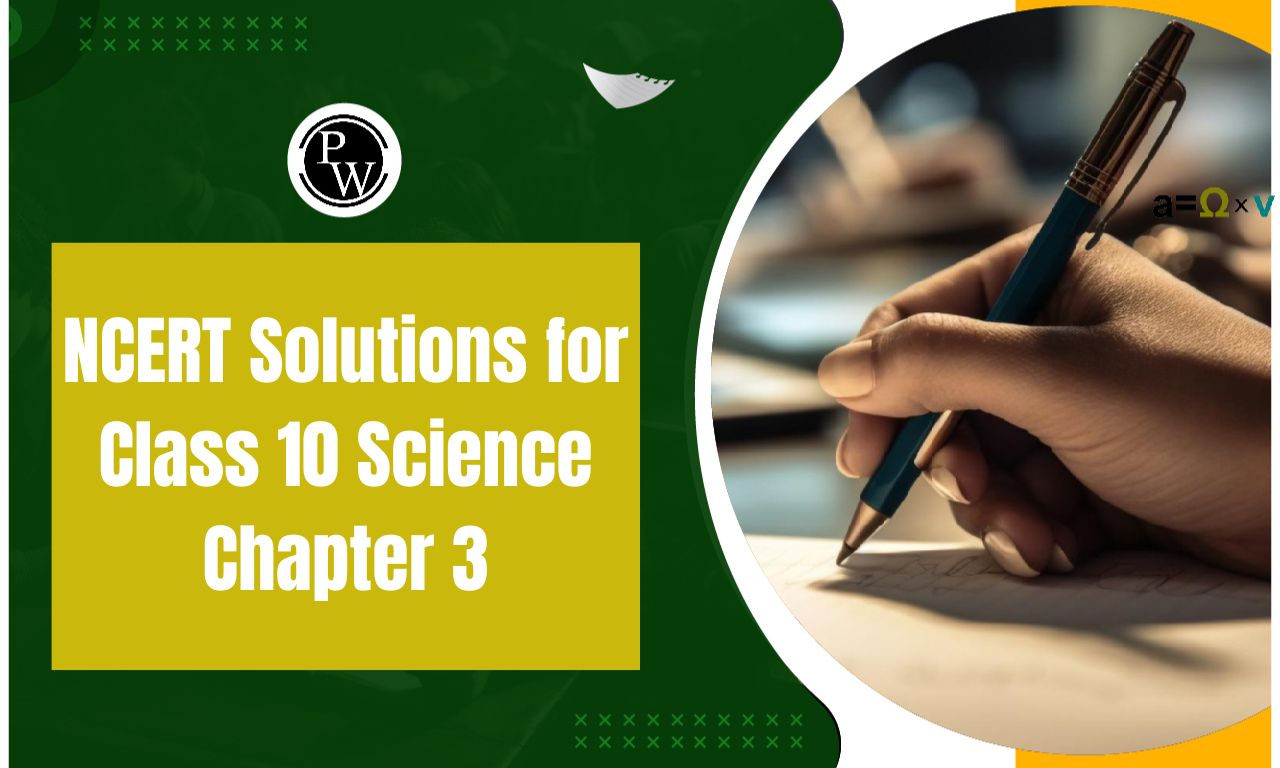The NCERT Solutions for Class 11 Biology Chapter 10 Cell Cycle and Cell Division, are available in a downloadable PDF format. This PDF provides detailed solutions to all the questions in the chapter, helping students grasp the concepts of cell division, mitosis, meiosis, and the regulation of the cell cycle. You can download this PDF to enhance your study sessions and prepare effectively for exams.
NCERT Solutions for Class 11 Biology Chapter 10 Cell Cycle and Cell Division
Below is the NCERT Solutions for Class 11 Biology Chapter 10 Cell Cycle and Cell Division-
Q.1. What is the average cell cycle span for a mammalian cell?
Answer:
The average cell cycle span for a mammalian cell is approximately 24 hours. This cycle includes various stages such as interphase (which consists of G1, S, and G2 phases) and the mitotic phase (M phase), during which cell division takes place.
Q.2. Distinguish cytokinesis from karyokinesis.
Answer:
Cytokinesis
is the division of the cytoplasm that occurs at the end of the cell cycle, resulting in two separate daughter cells. It begins during the late stages of the mitotic phase.
Karyokinesis
refers to the division of the cell’s nucleus during mitosis or meiosis, resulting in the separation of the genetic material into two sets, one for each daughter cell.
Q.3. Describe the events taking place during interphase.
Answer:
Interphase is the phase where the cell prepares for division and is divided into three stages:
G1 phase (Gap 1):
The cell is metabolically active, growing in size and synthesizing proteins for DNA replication.
S phase (Synthesis):
DNA replication occurs, doubling the DNA content of the cell. The chromosome number remains the same, but each chromosome consists of two chromatids.
G2 phase (Gap 2):
The cell continues to grow and synthesizes proteins needed for mitosis. It also ensures that the DNA replication is accurate before cell division begins.
Q.4. What is the Go (quiescent phase) of the cell cycle?
Answer:
The
G0 phase
is a resting phase where cells are no longer dividing. It occurs when cells exit the G1 phase and enter a dormant state. Cells in the G0 phase can either remain inactive indefinitely or re-enter the cell cycle when needed, such as during tissue repair or cell regeneration.
Q.5. Why is mitosis called equational division?
Answer:
Mitosis is called
equational division
because it results in two daughter cells that are genetically identical to the parent cell, with the same number of chromosomes. The chromosome number does not change, and each daughter cell receives an equal and identical set of chromosomes.
Q.6.
Name the stage of cell cycle at which one of the following events occur:
(i) Chromosomes are moved to spindle equator.
(ii) Centromere splits and chromatids separate.
(iii) Pairing between homologous chromosomes takes place.
(iv) Crossing over between homologous chromosomes takes place.
Answer:
(i)
Chromosomes are moved to the spindle equator
in
Metaphase
. During this stage, chromosomes align along the metaphase plate, positioned equidistantly from the two poles of the spindle.
(ii)
Centromere splits and chromatids separate
in
Anaphase
. Here, the centromeres divide, and the sister chromatids are pulled toward opposite poles of the cell.
(iii)
Pairing between homologous chromosomes takes place
in the
Zygotene stage of Prophase I in meiosis
. During zygotene, homologous chromosomes pair up closely in a process known as synapsis.
(iv)
Crossing over between homologous chromosomes takes place
during the
Pachytene stage of Prophase I in meiosis
. In this stage, homologous chromosomes exchange segments of genetic material, contributing to genetic diversity.
Q.7.
Describe the following:
(a) synapsis (b) bivalent (c) chiasmata
Draw a diagram to illustrate your answer.
Answer:

(a) Synapsis:
Synapsis is the pairing of homologous chromosomes during
Zygotene
in Prophase I of meiosis, where they align closely and exchange genetic material.
(b) Bivalent:
A bivalent or tetrad refers to a pair of homologous chromosomes, each made up of two sister chromatids, that are synapsed during
Zygotene
.
(c) Chiasmata:
Chiasmata are X-shaped structures formed during
Diplotene
of meiosis, where crossing over occurs between homologous chromosomes, exchanging genetic material.
Q.8. How does cytokinesis in plant cells differ from that in animal cells?
Answer:
In plant cells,
cytokinesis occurs by the formation of a
cell plate
, which eventually forms the new cell wall.
In animal cells,
cytokinesis occurs by
cleavage
, where the cell membrane pinches inwards to divide the cell into two. The process begins at the periphery and moves inward, forming a midbody at the center of the cell.
Q.9. Find examples where the four daughter cells from meiosis are equal in size and where they are unequal in size.
Answer:
In the
formation of male gametes
(sperms) in humans, the four daughter cells formed during meiosis are equal in size. In the
formation of female gametes
(ova), three smaller polar bodies are produced, leaving one large ovum, resulting in unequal daughter cells.
Q.10. Distinguish anaphase of mitosis from anaphase I of meiosis.
Answer:
In
Anaphase of mitosis
, the centromere splits, and sister chromatids separate, moving toward opposite poles.
In
Anaphase I of meiosis
, the centromere does not split. Instead, homologous chromosomes are pulled apart, and sister chromatids remain connected at their centromere.
Q.11. List the main differences between mitosis and meiosis.
Answer:

Mitosis:
Occurs in somatic cells, results in two identical daughter cells, and maintains the same chromosome number.
Meiosis:
Occurs in germ cells, results in four non-identical daughter cells, and halves the chromosome number to create gametes for sexual reproduction.
Q.12. What is the significance of meiosis?
Answer:
Meiosis is essential for sexual reproduction as it reduces the chromosome number by half, ensuring that offspring inherit the correct number of chromosomes. It promotes genetic diversity through crossing over and independent assortment, which is important for evolution.
Q.13. Discuss haploid insects and lower plants where cell division occurs.
Answer:
Haploid insects
like drones of honeybees undergo cell division by mitosis.
Lower plants
like Spirogyra, Chlamydomonas, and certain pteridophytes also undergo mitosis for reproduction and growth.
Q.14. Can there be mitosis without DNA replication in the S phase?
Answer:
No, DNA replication is essential for mitosis. Without replication during the S phase, the cell would not have enough genetic material to divide properly.
Q.15. Can there be DNA replication without cell division?
Answer:
Yes, DNA replication can occur without cell division. For example, during the preparation for meiosis, DNA replication takes place without immediate cell division, allowing the chromosomes to duplicate.
Q16. Analyse the events during every stage of the cell cycle and notice how the following two parameters change
(i) the number of chromosomes (N) per cell
(ii) the amount of DNA content (C) per cell
Answer:
(i) The number of chromosomes (N) per cell
-
G1 phase:
The number of chromosomes remains the same as the parent cell (diploid in somatic cells). Each chromosome consists of a single chromatid.
-
S phase:
DNA replication occurs, but the number of chromosomes does not change. Each chromosome now consists of two sister chromatids, but the chromosome count (N) stays the same.
-
G2 phase:
The number of chromosomes remains the same, as the cell continues to grow and prepare for mitosis.
-
M phase (mitosis):
The chromosome number stays the same as the chromatids separate during anaphase, ensuring that the two daughter cells receive an identical set of chromosomes (N).
Thus, throughout the cell cycle,
the number of chromosomes (N)
does not change, but the structure of the chromosomes changes from a single chromatid in G1 to two sister chromatids in S and G2, before separating during mitosis.
(ii) The amount of DNA content (C) per cell
-
G1 phase:
The DNA content is at its baseline (C), representing one copy of the DNA per chromosome.
-
S phase:
DNA replication takes place, and the DNA content doubles. Each chromosome now consists of two sister chromatids, effectively doubling the DNA content (2C).
-
G2 phase:
The DNA content remains doubled (2C) as the cell prepares for division, and no further DNA replication occurs.
-
M phase:
As the chromatids are separated into two daughter cells, the DNA content is halved back to the baseline (C) in each daughter cell.
Thus, the DNA content
doubles during S phase (2C)
and then
is halved in the M phase (C)
as the cell divides into two.
Benefits of Solving Cell Cycle and Cell Division Class 11 NCERT Solutions
-
Conceptual Clarity
: The NCERT Solutions help students build a solid understanding of the complex processes involved in the cell cycle and cell division. These include stages like interphase, mitosis, and meiosis, ensuring that students fully grasp how cells divide and reproduce.
-
Improved Problem-Solving Skills
: By solving the problems in the NCERT solutions, students develop critical thinking and problem-solving skills, as they learn to apply theoretical knowledge to practical scenarios, such as identifying stages in the cell cycle or understanding the process of meiosis.
-
Better Retention
: Detailed answers and explanations provided in the NCERT solutions help reinforce key concepts, improving long-term retention. The clear explanations of each stage and process also ensure that students remember these concepts more effectively.
-
Clarity on Diagrams
: The NCERT solutions include labeled diagrams, helping students visualize the processes like mitosis and meiosis. This enhances understanding, as the visual representation makes it easier to grasp the changes happening in the cell during different phases.
-
Foundation for Advanced Topics
: A strong understanding of the cell cycle and division lays the groundwork for more advanced topics in genetics, molecular biology, and other biological sciences, aiding students who wish to pursue higher studies in biology or related fields.
-
Increased Confidence
: Solving the NCERT solutions boosts students confidence in tackling questions related to the cell cycle, especially in exams, as they become familiar with the type and format of questions they may face.













